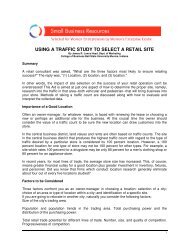Cascade NTFP Regional Profile.pdf - First Nations in British ...
Cascade NTFP Regional Profile.pdf - First Nations in British ...
Cascade NTFP Regional Profile.pdf - First Nations in British ...
You also want an ePaper? Increase the reach of your titles
YUMPU automatically turns print PDFs into web optimized ePapers that Google loves.
<strong>Cascade</strong>s <strong>NTFP</strong> <strong>Profile</strong><br />
higher salaries and lower educational requirements. Therefore education may not have as<br />
great an impact on <strong>in</strong>come and health determ<strong>in</strong>ants as other regions. However regions<br />
more dependent on primary <strong>in</strong>dustries are more vulnerable to economic downturns <strong>in</strong> the<br />
economy.<br />
The traditional economy of <strong>First</strong> <strong>Nations</strong> may be another factor attribut<strong>in</strong>g better health<br />
with<strong>in</strong> this region despite the low socio-economic status. Research <strong>in</strong>to Canadian<br />
Aborig<strong>in</strong>al economies demonstrates the substantial monetary value of traditional resource<br />
acquisition (Berkes 1994). The most recent Public Health Officers Report (2006)<br />
identifies the importance of traditional diets to health of Aborig<strong>in</strong>al people. Consider<strong>in</strong>g<br />
the standard of liv<strong>in</strong>g is 20 percent lower for Aborig<strong>in</strong>al people <strong>in</strong> <strong>British</strong> Columbia than<br />
other <strong>British</strong> Columbians poverty and food security are cont<strong>in</strong>ued concerns (B.C.<br />
Prov<strong>in</strong>cial Health Officer 2006). These issues are paramount <strong>in</strong> consider<strong>in</strong>g the use and<br />
management of NTFRs <strong>in</strong> the region.<br />
Figure 4. Highest Level of School<strong>in</strong>g <strong>in</strong> Population 15 years and older<br />
Percent of population<br />
15 years and older<br />
45<br />
40<br />
35<br />
30<br />
25<br />
20<br />
15<br />
10<br />
5<br />
0<br />
Grade 9 - 13 with<br />
secondary school<br />
graduation certificate<br />
Highest Level of School<strong>in</strong>g<br />
Trades certificate or<br />
diploma<br />
University with<br />
bachelor's degree or<br />
higher<br />
Females with Postsecondary<br />
Males with Postsecondary<br />
<strong>Cascade</strong>s-Aborig<strong>in</strong>al BC-Aborig<strong>in</strong>al <strong>Cascade</strong>s-Total Population BC- Total Population<br />
(Statistics Canada 2001)<br />
<strong>First</strong> <strong>Nations</strong><br />
There is a large and diverse <strong>First</strong> <strong>Nations</strong> population <strong>in</strong> the District, with the<br />
Nlaka’pamux, Okanagan, Secwepemc, St’át’imc, and Ts’ilhqot’<strong>in</strong> all hav<strong>in</strong>g a<br />
considerable <strong>in</strong>terest <strong>in</strong> the landbase (MOFR 2007c). These <strong>Nations</strong> have asserted rights<br />
and title over the land, waterways, air and the natural resources with<strong>in</strong> their traditional




